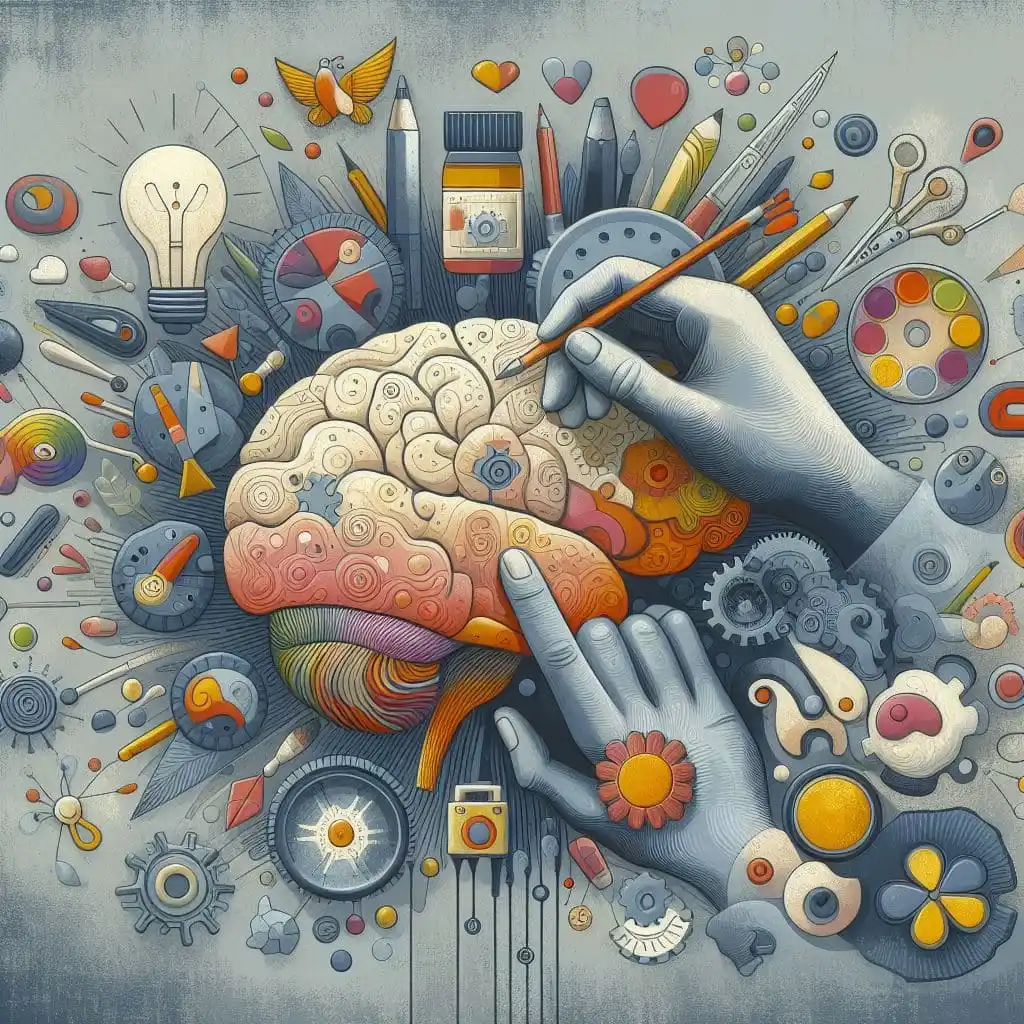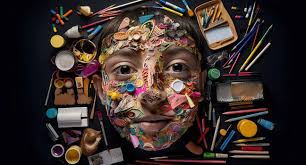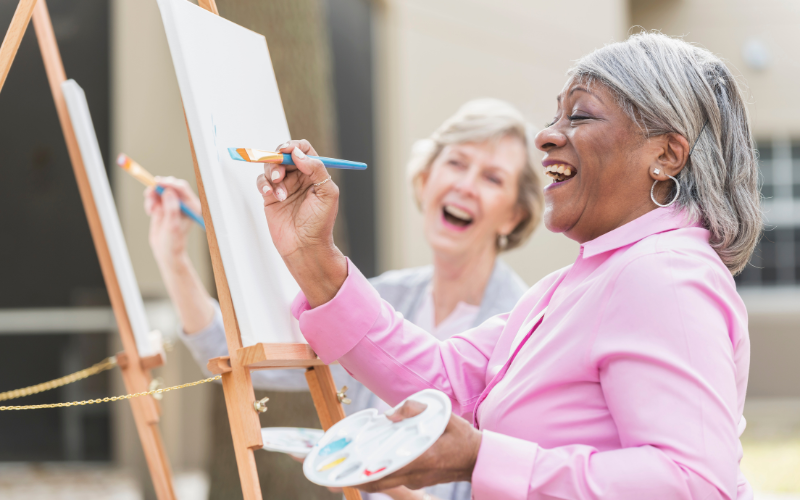Table of Contents

1. Introduction of Art Therapy
In today’s fast-paced and often stress-inducing world, the search for innovative and effective mental health solutions is more critical than ever. Enter the realm of art and music therapy, two interdisciplinary fields that have been gaining significant attention for their unique ability to support emotional well-being and facilitate healing. These creative therapies have become increasingly popular as people recognize the limitations of traditional talk therapy and seek alternative ways to express and understand their inner landscapes.
Art Therapy
2. Understanding Art and Music Therapy
Art therapy is a form of expressive therapy that utilizes the creative process of making art to improve a person’s mental, emotional, and physical well-being. It is a client-centered approach that allows individuals to explore their feelings, reconcile emotional conflicts, foster self-awareness, manage behavior and addictions, develop social skills, improve reality orientation, reduce anxiety, and increase self-esteem. The practice has its roots in the mid-20th century when mental health professionals began to recognize the healing potential of artistic expression. Art therapy is used in various settings, including hospitals, schools, and community centers, and is suitable for individuals of all ages.
Music therapy, on the other hand, is a clinical and evidence-based use of music interventions to accomplish individualized goals within a therapeutic relationship by a credentialed professional who has completed an approved music therapy program. It involves the use of music to address the physical, emotional, cognitive, and social needs of individuals. Like art therapy, music therapy has a rich history, with its origins in the use of music for healing in ancient civilizations. It has evolved into a respected and recognized profession that serves diverse populations in various settings, such as hospitals, rehabilitation centers, and schools.
While art therapy tends to focus on visual and tactile forms of expression, music therapy leverages the universal language of sound. Both therapies are deeply personal, offering clients a way to communicate and process their experiences without the constraints of traditional verbal communication. They are both client-centered, meaning that the therapist tailors the therapeutic approach to meet the specific needs of the individual, allowing for a profound sense of empowerment and self-discovery.


3. The Science Behind Art and Music Therapy
The effectiveness of art and music therapy is not merely anecdotal; there is a substantial body of scientific research that supports their therapeutic benefits. When engaging in artistic endeavors, the brain’s reward system is activated, releasing dopamine and serotonin, which are neurotransmitters associated with pleasure and mood regulation. These neurochemical changes can lead to a sense of relaxation and improved mood, making art therapy a potent tool for managing stress and anxiety.
Moreover, art therapy can help individuals develop greater self-awareness by providing a tangible representation of their inner thoughts and feelings. This heightened self-knowledge can lead to better emotional regulation and a greater sense of control over one’s mental state. The act of creating art has been shown to engage the prefrontal cortex, the area of the brain associated with executive function, which can enhance decision-making and problem-solving skills.
Music therapy also has profound neurobiological effects. It can induce a state of relaxation by lowering cortisol levels, the body’s primary stress hormone, which can reduce heart rate, blood pressure, and other physiological markers of stress. Additionally, music therapy can help regulate emotions by activating the brain’s limbic system, which is linked to emotional processing and memory.
Both art and music therapies engage the mind and body, fostering a deep sense of integration and well-being. Through the act of creating or engaging with art or music, individuals can develop a heightened sense of self-awareness, leading to greater emotional intelligence and overall mental health.
4. Benefits of Art Therapy
Art therapy has been shown to have a multitude of positive effects on mental health. For those who struggle with emotional expression, art therapy can provide a much-needed outlet for feelings that are too complex or painful to put into words. It allows for a non-verbal form of communication, offering a gentle yet profound way to process and release emotions.
One of the most significant benefits of art therapy is the promotion of self-discovery and insight. By exploring their thoughts and feelings through visual and tactile media, individuals can gain a deeper understanding of their psychological landscape. This can lead to greater clarity and a more nuanced sense of identity, which can be particularly beneficial for those who have experienced trauma or are navigating significant life changes.
Furthermore, art therapy can enhance self-esteem and confidence. Completing an art project, regardless of the perceived quality of the final product, can be an empowering experience, offering a tangible symbol of personal achievement.
Some common art therapy exercises include mandala drawing, which encourages relaxation and self-reflection, and painting emotions, where clients are guided to translate their feelings into color and form. These activities can help clients develop a newfound appreciation for their creativity and resilience.


5. Benefits of Music Therapy
Music therapy is equally as impactful, offering a range of psychological and emotional benefits. It can be an effective tool for stress reduction, helping individuals to unwind and refocus their attention. The rhythmic nature of music can be particularly soothing, offering a sense of predictability and structure that can be comforting during turbulent times.
For those who have experienced trauma, music therapy can be a gentle yet powerful means of accessing and processing intense emotions. By engaging in music, individuals can learn to regulate their emotional responses in a controlled and supportive environment, fostering a greater sense of safety and self-control.
Music therapy also has a unique capacity to facilitate social connections and improve communication skills. Group sessions can encourage collaboration and provide a shared experience that transcends language and cultural barriers, leading to increased empathy and understanding.
Common music therapy exercises include lyric analysis, where clients explore the emotional content of songs, and songwriting, which allows individuals to express their personal narratives in a structured and meaningful way. These activities can help clients develop emotional regulation strategies and improve their interpersonal skills.
6. Art and Music Therapy in Different Settings
The versatility of art and music therapy means they are applicable in various settings, each offering unique advantages.
In hospitals and clinics, these therapies serve as vital components of a holistic treatment approach. They can help patients manage pain, reduce stress, and cope with the emotional toll of illness. For example, art therapy can be used alongside traditional medical treatments to enhance recovery, while music therapy can provide a sense of comfort and normalcy during hospital stays.
Schools and youth centers are increasingly recognizing the benefits of these therapies for children and teenagers. They offer a safe space for young people to express their emotions, which can be particularly beneficial during periods of intense academic or social pressure. Art and music therapy can also help students develop coping strategies for stress and improve their emotional intelligence.
Community centers and support groups often incorporate art and music therapy into their programming. These group sessions can create a strong sense of camaraderie and shared experience, which can be incredibly healing for individuals facing similar challenges.
For those who prefer a more personal approach, art and music therapy can be practiced at home. Simple activities like creating a mood playlist or engaging in mindful doodling can offer a means of stress relief and self-reflection.


7. Challenges and Limitations
While art and music therapy have much to offer, they are not without their challenges. Access and affordability are significant issues, as finding qualified therapists and covering the cost of sessions can be difficult for some individuals. Insurance coverage for these therapies is often limited, which can prevent many from accessing them.
Additionally, there are misconceptions about the need for artistic or musical talent to benefit from these therapies. It is essential to communicate that the therapeutic value lies in the process of creation, not the final product. These therapies are about expressing emotions and exploring the self, not about producing a masterpiece.
Furthermore, while art and music therapy can be incredibly helpful, they should not be seen as a cure-all for mental health issues. Instead, they should be integrated into a comprehensive treatment plan that may include medication, psychotherapy, and other forms of support.
8. Conclusion
In conclusion, art and music therapy offer a multitude of benefits for mental health and personal growth. By providing alternative means of emotional expression and fostering self-awareness, they can serve as powerful complements to traditional forms of therapy. Whether experienced in a professional setting or practiced at home, these creative outlets can be transformative for individuals seeking relief from stress, anxiety, and other mental health challenges.
The beauty of art and music therapy lies in their ability to transcend language and cultural barriers, making them accessible and beneficial to a wide array of people. As we continue to navigate the complexities of the modern world, embracing the healing power of creativity becomes ever more essential. By recognizing the profound impact that art and music can have on our mental and emotional well-being, we can begin to integrate these practices into our daily lives and encourage others to do the same.
Remember, the journey of mental health is as unique as each individual, and what works for one may not work for another. However, the exploration of art and music therapy can open the door to profound insights and healing experiences. As you consider these therapies, whether for professional use or personal growth, keep an open mind and be willing to embrace the creative process as a means of understanding and nurturing your inner self.